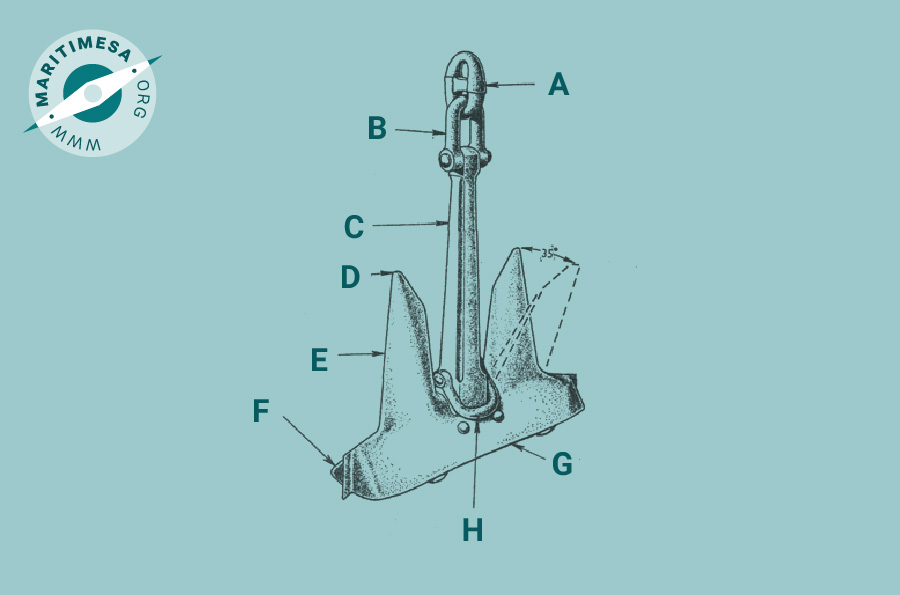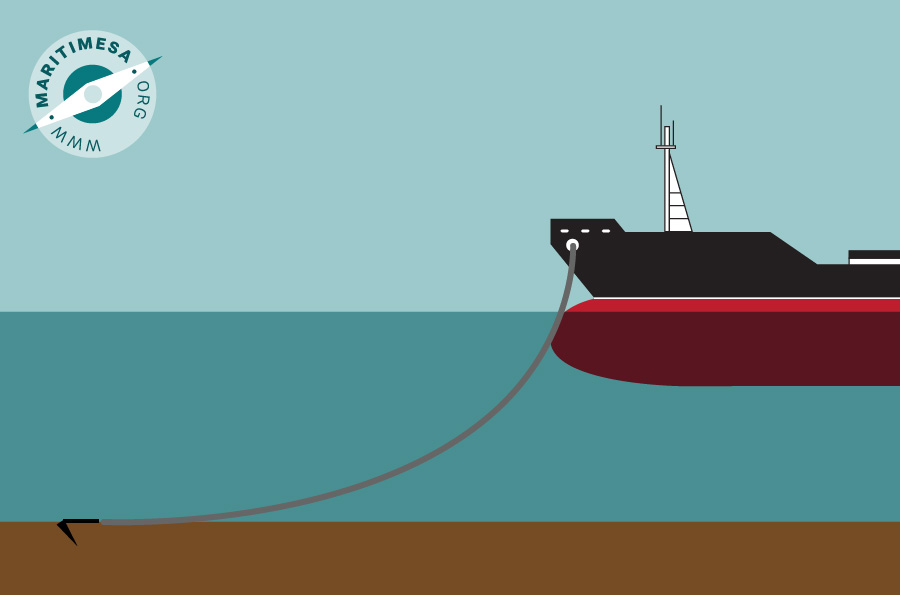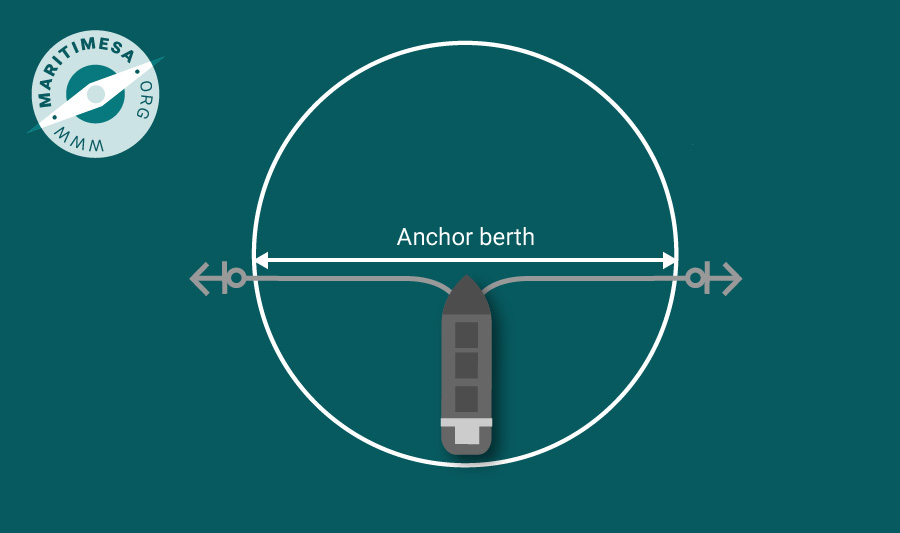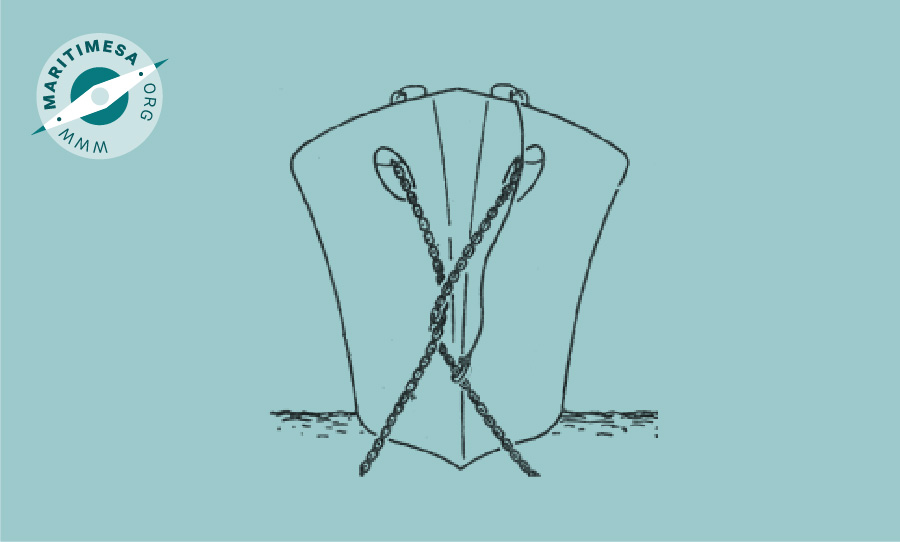When a ship is anchored, there are two things to consider, namely the nature of the sea bed and the depth of water. It is not the weight of the anchor that holds the vessel in place but rather the horizontal pull of the anchor along the sea bed. Anchors are designed with flukes which are pivoted at the end of the shank, their purpose being to dig the anchor into the sea bed when it is pulled horizontally along the bottom.

Modern ship’s anchor.
Parts of an anchor:
A – Lugless joining shackle.
B – Anchor ring.
C – Shank.
D – Pea or bill.
E – Fluke.
F – Tripping palm.
G – Crown.
H – Gravity shackle
How an anchor works. When the anchor is let go and reaches the sea bottom, it will fall on its side. The vessel then usually gives a kick astern in order to lay out the cable along the bottom. As it is pulled the flukes of the anchor will dig the anchor into the bottom (if it is soft enough). The initial vertical pull of the cable is basically changed to a horizontal pull and this is what holds the ship in position.

Ship at anchor with anchor dug-in.
The nature of the seabed. The nature of the sea bed is important and decides how securely the ship
will lie. A rocky bottom is not a good holding ground and the ship will tend to drag its anchor.
On the other hand, a sea bed of mud, sand, clay and shingle will provide better holding because
the flukes are able to dig themselves into the sea bed. In order for the anchor to dig itself into the sea bed, it is essential that sufficient cable is paid out to allow for the part attached to the shank to lie parallel to the sea bed. This will provide a horizontal pull and not a vertical pull on the anchor. Whilst the amount of cable required depends on a number of factors, a rough rule of thumb is: “The amount of cable used should be at least three to four times the depth of water”.
Use of a single anchor. Depending on the anchor design, the nature of the sea bed and the amount of cable veered, anchoring with a single anchor will provide sufficient holding even in bad weather. The only disadvantage of this method is that the ship takes up a lot more sea room when she swings round her anchor with the wind and tidal stream.

Ship lying to a single anchor.
Use of two anchors. The main purpose of anchoring with two anchors is to reduce the sea room required by the ship for swinging. At the same time it improves the holding ability of the anchors. In this method the ship lays the first anchor and then goes astern to lay the second one. Once laid the ship centralises itself between the two anchors. The disadvantages of this method are that it will take more time to weigh anchor and there is a possibility that the ship will swing around the cables and end up with a foul hawse (the anchor cables are twisted around one another). This will necessitate clearing the twisted cables before weighing anchor.

Ship lying to two anchors.

Ship with twisted anchor cables.

